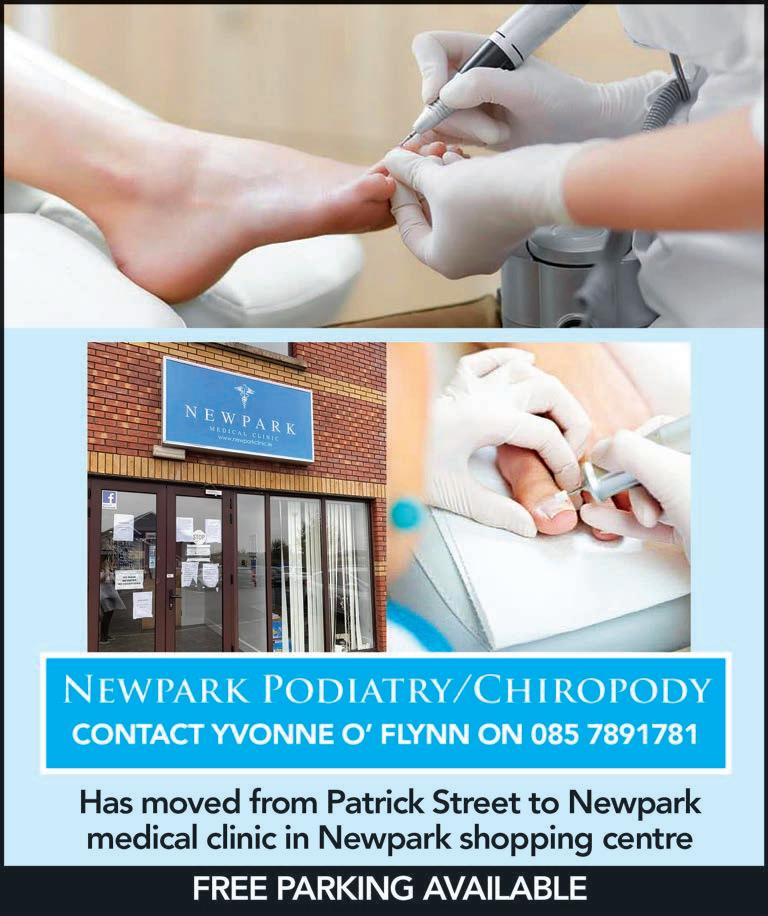
5 minute read
John Ellis
The role of a pension scheme trustee
BY JOHN ELLIS
Advertisement
FINANCIAL ADVISOR
THE earth did not move, there were no signs in the night sky when IORP II was put into Irish law in April this year. IORP II stands for Institutions for Occupational Retirement Provision. is legislation is going to have a very signi cant impact on you if you are a trustee of an occupational pension scheme.
A trustee, usually a director of the company, is someone who had agreed to ‘be in charge’ of a pension scheme. Up until now many people who are trustees of a scheme when asked had no idea what their exact obligations were.
Most Direectors/trustees are hardworking, trustworthy and capable people trying to keep their business on the road. ey are interested in their employees and want to help them by setting up and in many cases contributing to a pension on their behalf.
IORP II was brought in to make sure that all trustees of all schemes regardless of size know and prove they ful lling the obligations of a trustee.
IORP II is designed to provide better protection through enhanced governance and risk management. Provide clear, relevant, and more consistent communication about the pension scheme and ensure that trustees have the necessary powers and credentials to supervise schemes.
Article 19 of the law states that trustees must make sure “all new scheme’s assets are predominantly invested in regulated markets. Direct property investments will be restricted, and borrowing can only be used for liquidity purposes and only on a temporary basis (this will a ect some scheme’s ability to borrow for direct property)”. Environmental, Social and Governance (ESG) issues must be considered when making investments and Trustees have a duty of care to manage the scheme’s assets prudently.
Trustees must establish and maintain e ective risk management, internal audit and, appoint a key function holder for each. is person must not carry out any other key function within the company, but depending on the size, nature, scale and complexity of the scheme trustees can allow the person carrying out a key function for the employer to also carry out that function for the trustees, once appropriate con ict of interest protocols are in place.
Now Trustees must collectively have adequate quali cations, knowledge, and experience with at least one trustee having trustee experience in two of the previous three years. Similar requirements apply to directors of a sole corporate trustee.
Trustees must now put in place e ective governance and internal controls. Trustees must have adequate quali cations, knowledge, and experience and provide evidence of how they satisfy this requirement. ey are appointed to maintain e ective risk management, internal audit and actuarial functions and must provide evidence that they have adequate quali cations, knowledge, and experience. e same person cannot carry out each role.
Trustees must have written policies for each of the key functions, and these must be reviewed every three years with a risk identi cation and assessment framework being established and carried out every three years. An annual compliance return must be submitted to the pensions authority each year and pension bene t statements and annual reports must be provided each year to members in line with the directive’s requirements
Many Directors currently have neither the time, inclination nor skills set to meet these onerous requirements. So, what can be done to become compliant?
All new schemes are no longer set up appointing the principal employer as trustee but the provider use in-house companies or partner with other trustee service companies o ering this to new and existing clients.
Other trustees of schemes are transferring trusteeship to Professional Trustee Companies who for an annual fee will ensure the laws are met. is must be made a priority by all current trustees, even the one-man schemes. Your rst port of call is your Financial Advisor who will advise you on the way forward and arrange the appropriate means to make you and your scheme compliant.
John@ellis nancial.ie 086 826263

Alcoholism – destruction in a bottle
ANDREW MCDONALD HYPNOTHERAPIST
ALCOHOLISM wrecks everything. It rips families apart, devastates health, ruins bank balances and ultimately, if not overcome, kills. Problems with the demon drink are as old as alcohol itself. So, most probably, are methods for beating them.
In days gone by, punishments for inebriation were draconian. Drunks in medieval times were put in the stocks to be ridiculed by passers-by. Even as recently as the 1700s, someone who had overdrunk could expect to be thrown into a lock up for the night. Many people might not know of the connection between this fact and Premier League football. Have a look at the logos of the teams. One of them has such a keep as its centrepiece. e building still stands a short ve minute drive from the club’s home ground.
Fortunately, we have moved on from those times. Whilst being drunk and disorderly is liable to land you a night in a cell, it’s likely to be a lot more comfortable, and less humiliating, than the locations described above. Moreover, alcoholism is now seen more and more as an illness rather than a personal failing. Many, maybe most, people who struggle with booze actually wish they didn’t but don’t know how to stop. e medical world is becoming increasingly attuned to this fact. ere is, however, a lack of awareness of a treatment for alcoholism which is very much available in Ireland. is is also coupled with a lack of belief in it, perhaps unsurprisingly given it sounds absolutely counterintuitive, the idea being akin to ghting re with re. However, there is very solid research which demonstrates very high success rates.
Known as e Sinclair Method, it involves taking a tablet, nalmefene (in some other countries, including America where popularity is growing more quickly, naltrexone is used) a couple of hours before drinking. You read that right... before drinking.
Nalmefene, or naltrexone, works by blocking the reward paths in your brain. is means the rush a problem drinker gets from consuming alcohol doesn’t hit them. Without this, the urge to drink more decreases because there is no longer any positive reinforcement. Put bluntly, drinking beer, wine or spirits becomes akin to drinking water, a mineral or juice. It quenches thirst but you’re no longer driven to consume more to get the same euphoria. Over time, the mind learns to break the association between alcohol and getting buzzed.
Like all other treatments, a medical practitioner, rather than a newspaper article, is the place to go for good advice on what might suit an individual. Every problem drinker’s situation is di erent and what might work for one, may not work for another. Alcoholics Anonymous, medications like campral, counselling, SMART Recovery and rehab centres are all viable alternatives. No treatment is a miracle cure and all need expert support and guidance from properly quali ed experts. Above all, if you’re struggling, talk to a medic and get the help that you deserve!











